

Belleek Pottery
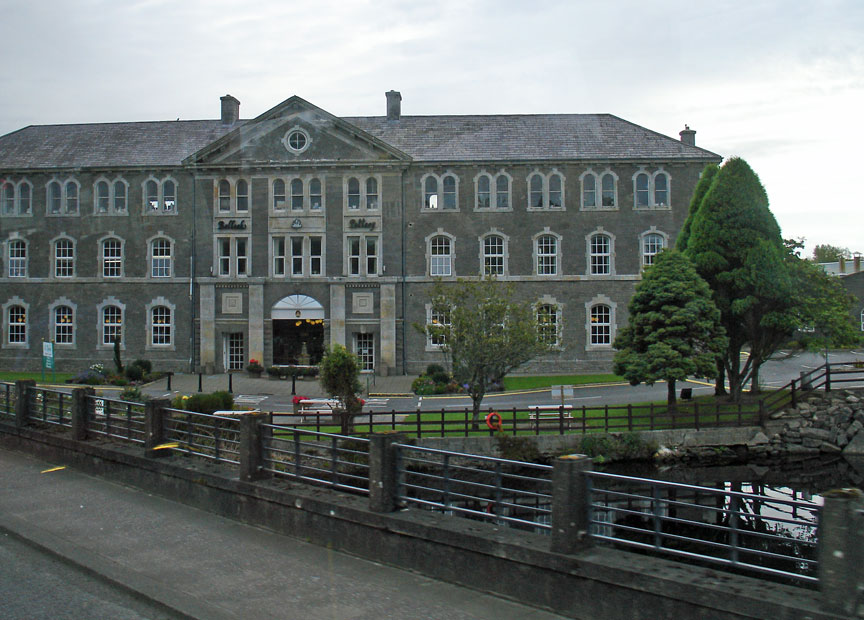
Belleek Pottery Works Company Ltd
Belleek Pottery Ltd is a porcelain company that began trading in 1887 as the Belleek Pottery Works Company Ltd in Belleek, County Fermanagh, in what was to become Northern Ireland. The factory produces porcelain that is characterized by its thinness, slightly iridescent surface and that the body is formulated with a significant proportion of frit.
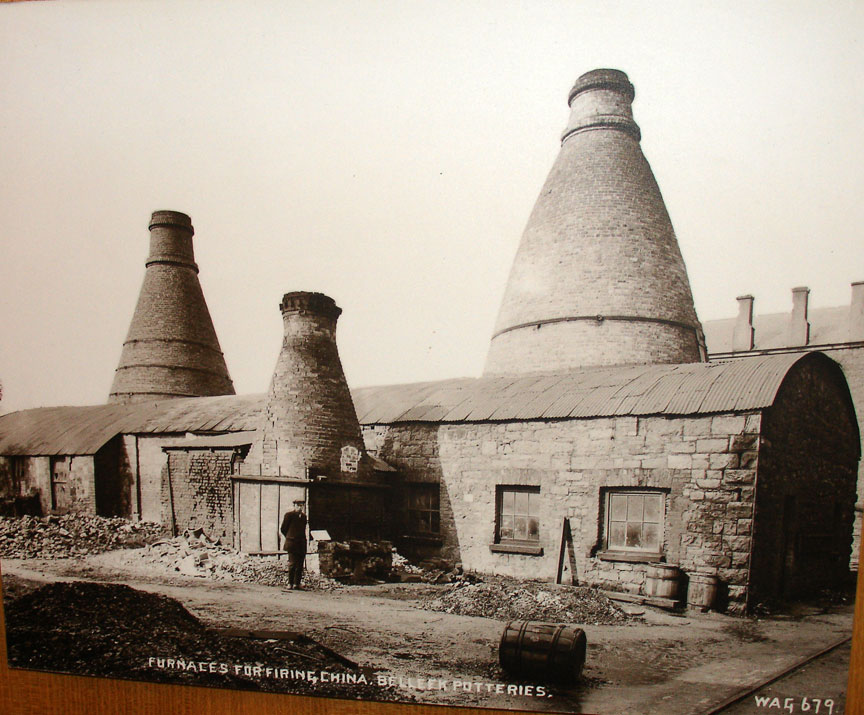
old pottery ovens
Pottery in the region began around 1849, after John Caldwell Bloomfield inherited his father's estate. Seeking to provide employment for his tenants, who had been affected by the Irish potato famine and, being an amateur mineralogist, he ordered a geological survey of his land. On finding that the area was rich in minerals, Bloomfield went into partnership with London architect Robert Williams Armstrong and Dublin merchant David McBirney. In setting up a pottery business, Bloomfield managed to get a railway line built to Belleek so that coal could be delivered with which to fire kilns.
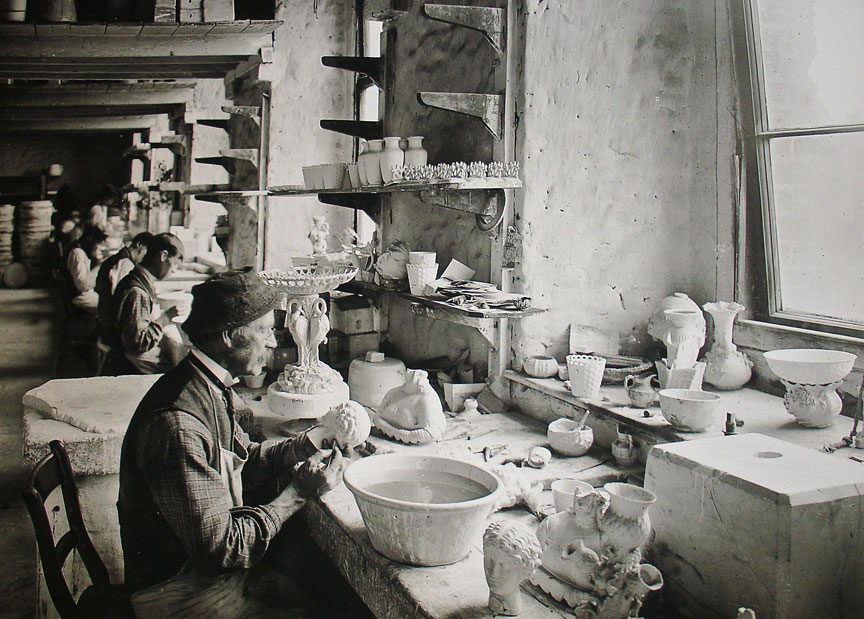
the workers
Building started on the pottery in 1858. Initially starting with domestic products, it wasn't until 1863 that small amounts of the Parian porcelain for which Belleek is famous for to this day, was successfully produced. By 1865, the prestige of the company had increased enough that its market included Ireland, England, the United States, Canada and Australia, and clients included the Prince of Wales, Queen Victoria and the nobility.
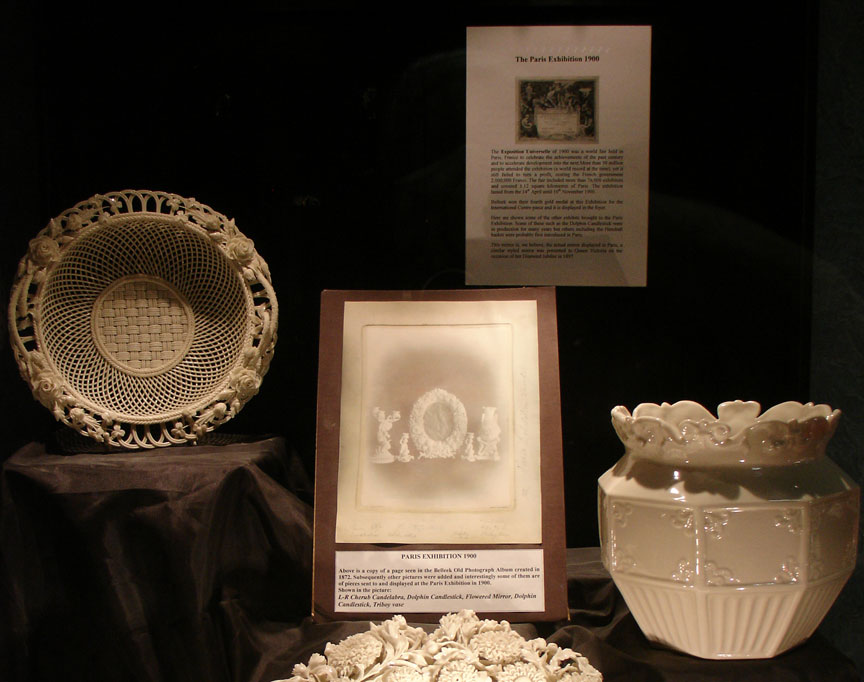
shown in Paris 1900
The original owners had all died by 1884, and a local group of investors acquired the concern and named it Belleek Pottery Works Company Ltd. Master craftsmen Frederick Slater moved from England to Belleek in 1893 and by 1920 high quality porcelain was becoming the mainstay of the business. The company struggled throughout the First and Second World Wars, and the company concentrated on producing earthenware during these periods.

After the Second World War, Belleek Pottery stopped production of earthenware
entirely. The Pottery began the change from coal fired kilns to electric powered
kilns from 1952. In 1983 the Industrial Development Board gave financial
assistance to the company and installed Roger Troughton as the Managing
Director. The following year Troughton made a successful bid for the sale of the
company. In 1988, Dungannon-based Powerscreen International bought the company
and opened a Visitor Centre the following year.
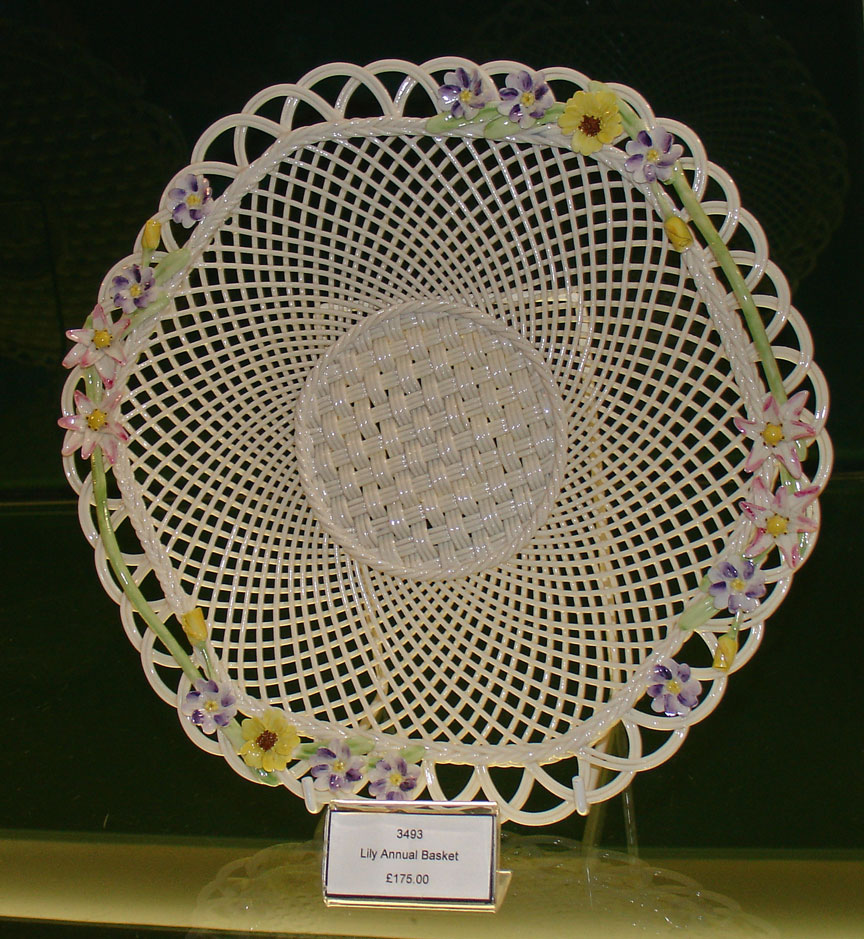
1990 saw the enterprise changing hands again. Dundalk-born US-based Dr. George
G. Moore remains the owner to this day, though the company is run locally by
four Directors. Since then Belleek Pottery has expanded its size in terms of
factory space, acquisitions of other companies, staff and turnover. Subsidiary
companies now include Galway Crystal, Aynsley China and Donegal Parian China. It
employs more than six hundred people and enjoys an annual turnover of around £30
million.
Text from Wikipedia
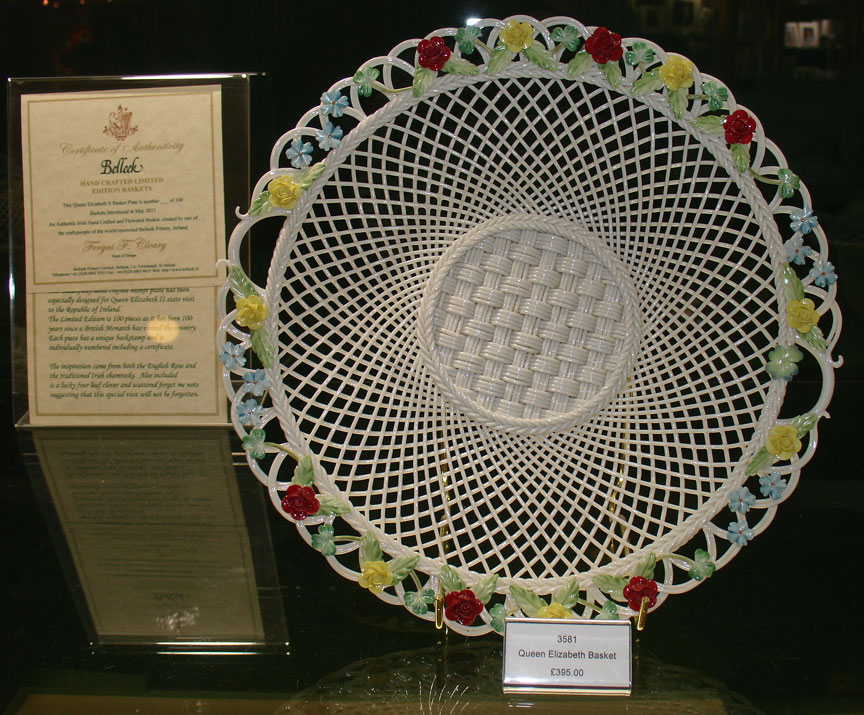
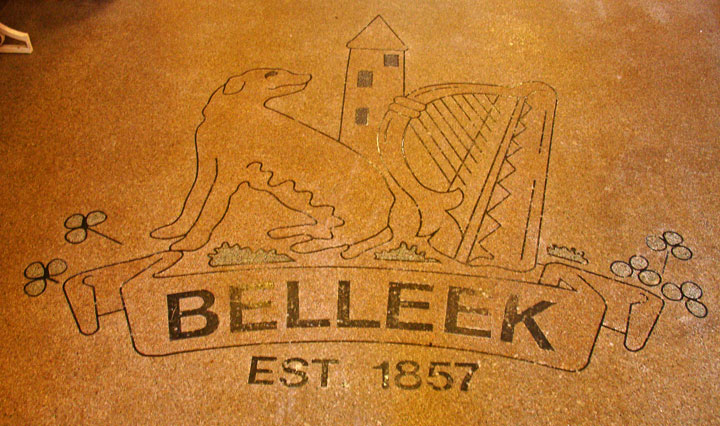
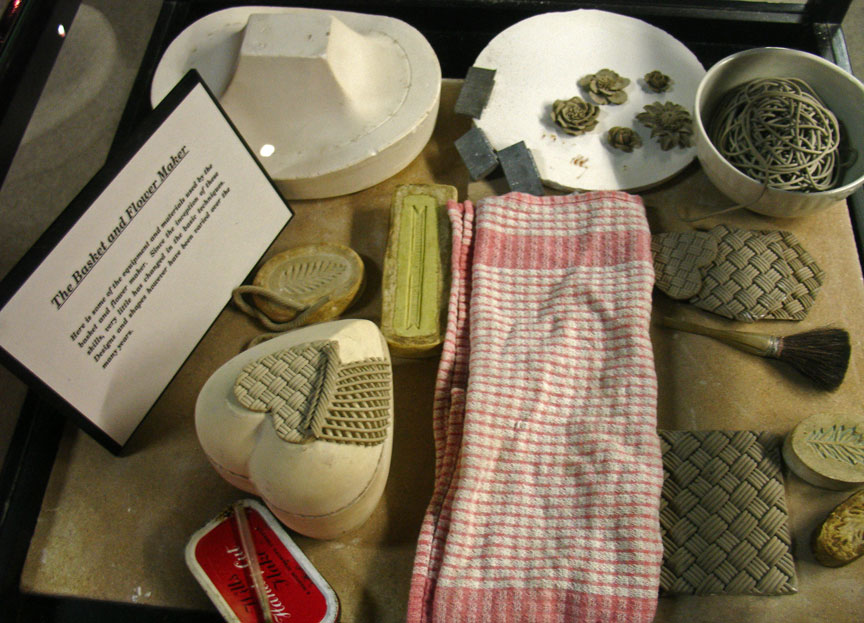
the museum of basket and flower making
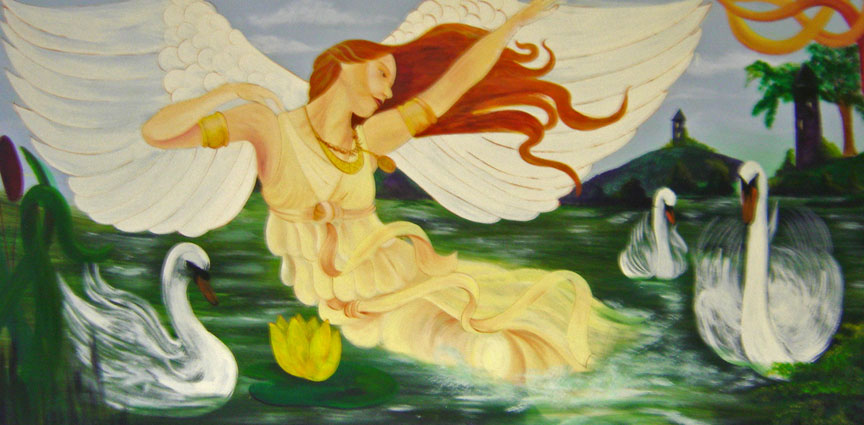
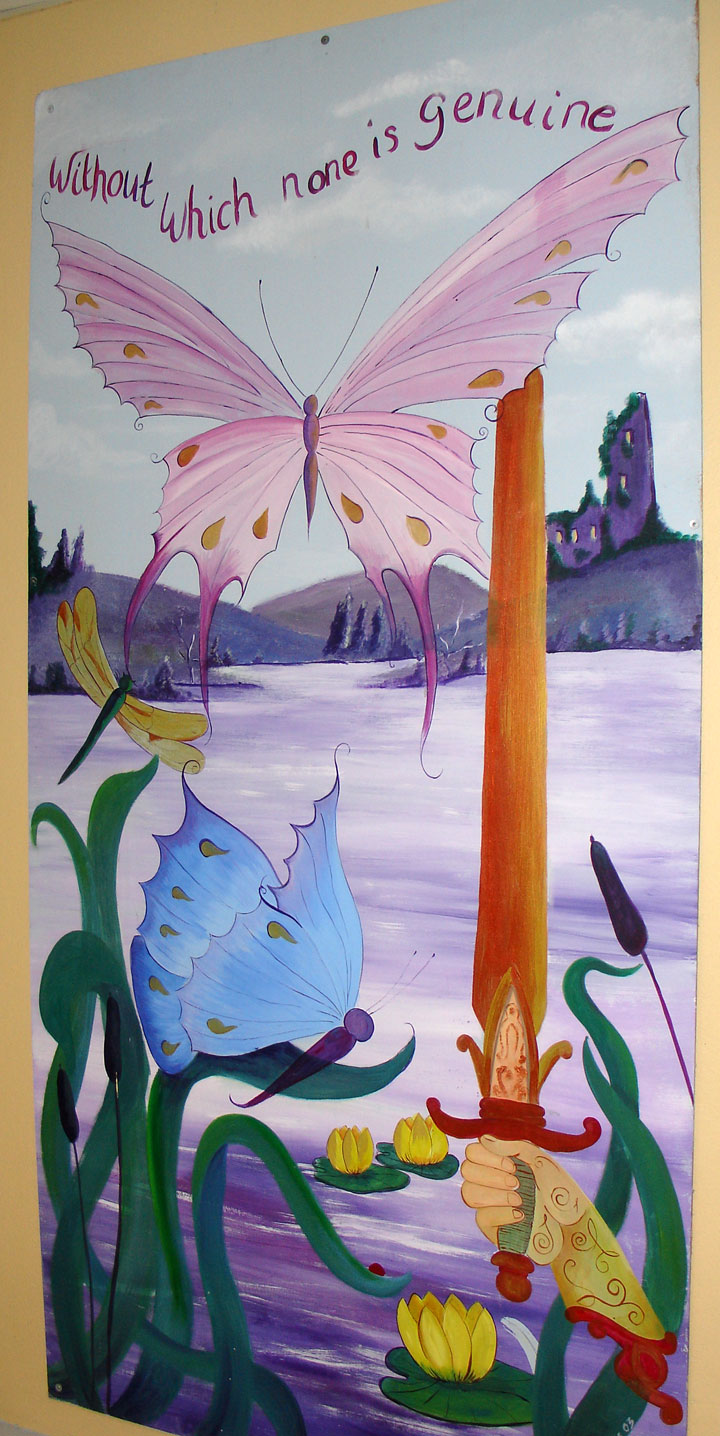

showing use of molds
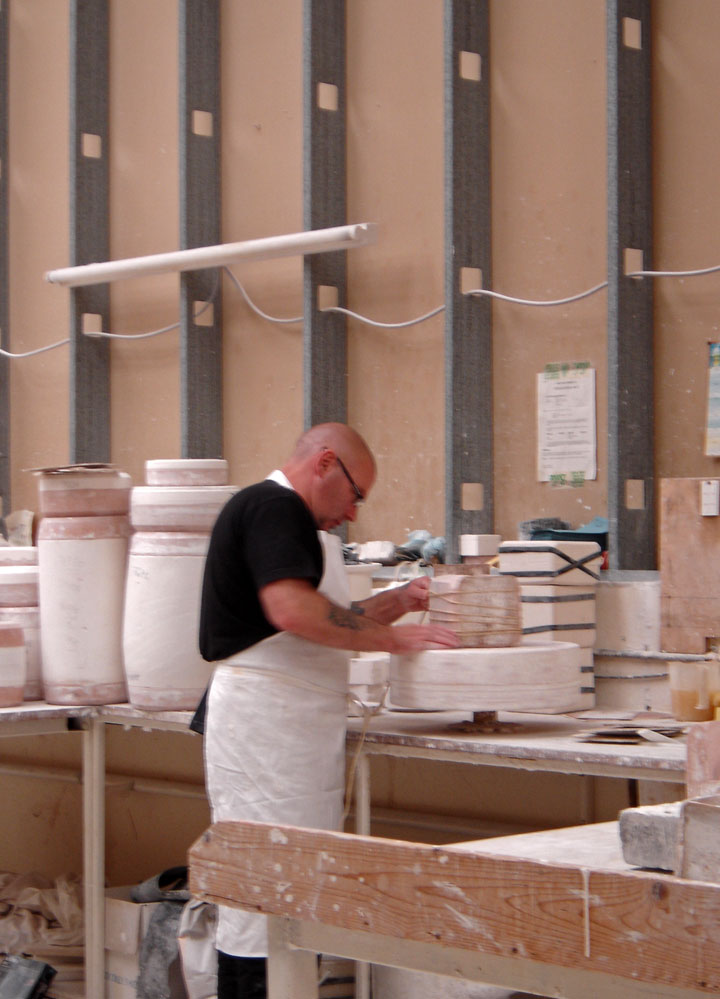
preparing mold
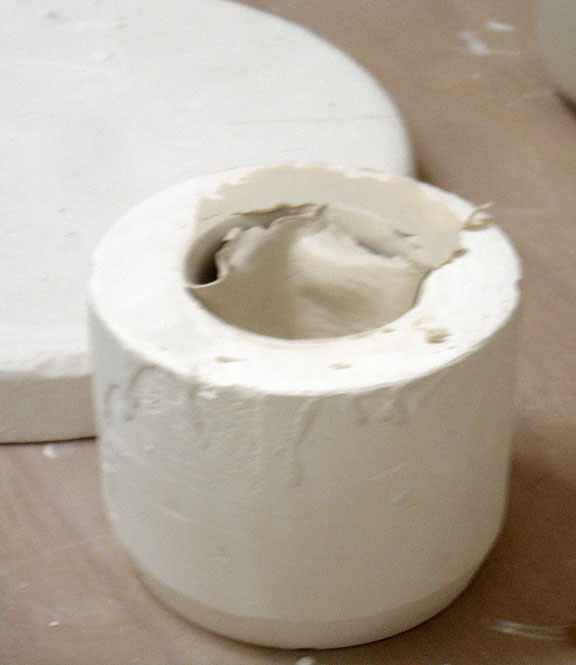
slip added to a mold
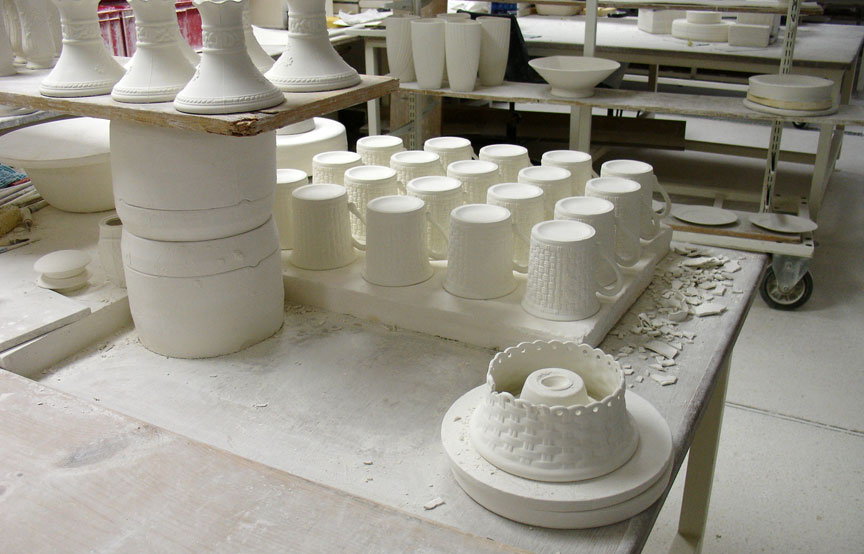
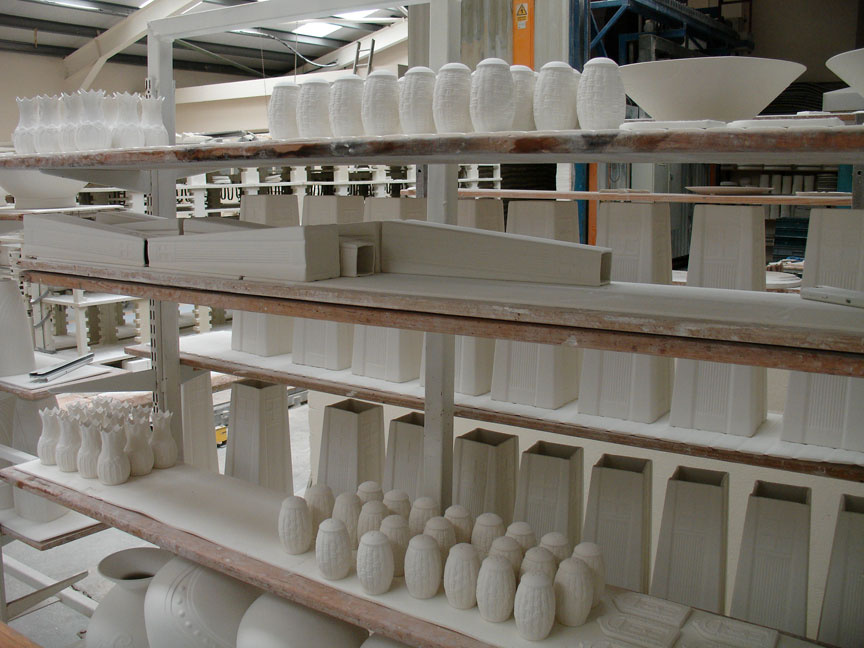
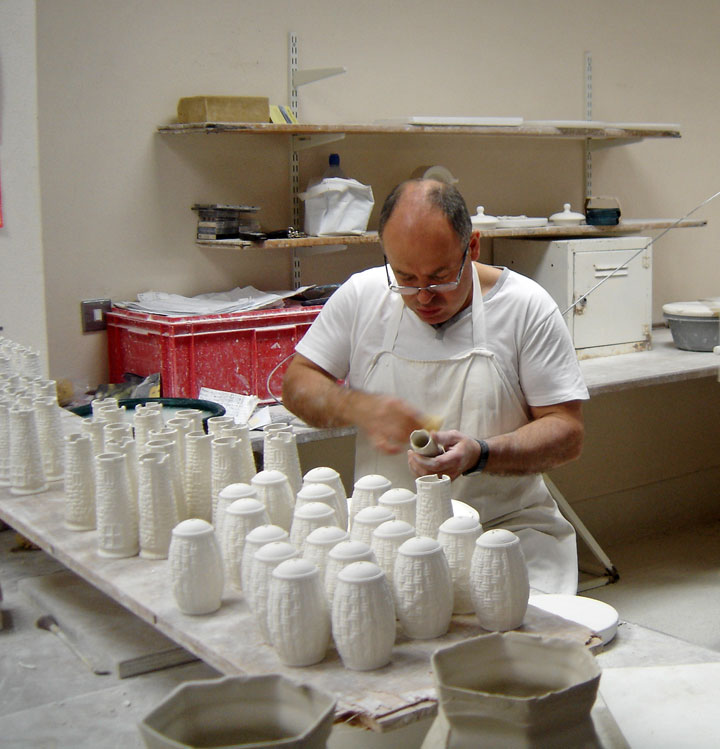
removing excess material

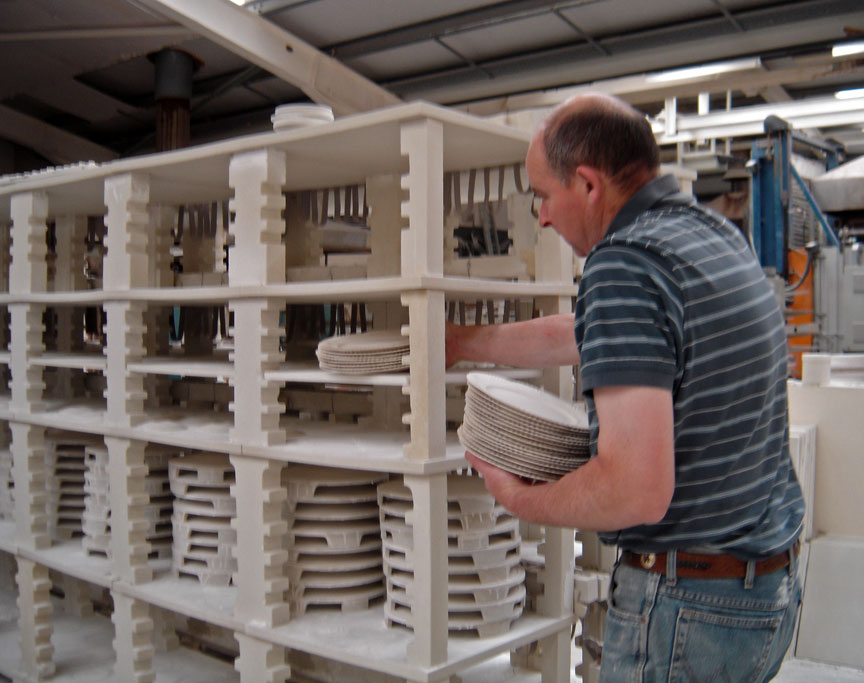
removing from kiln stand
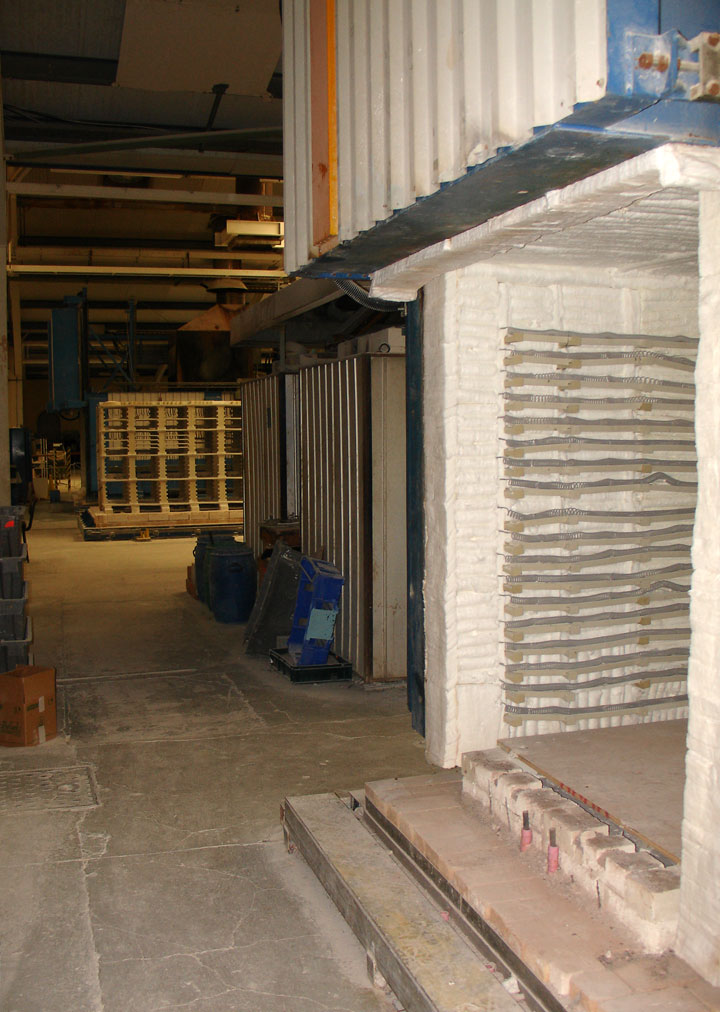
the kiln
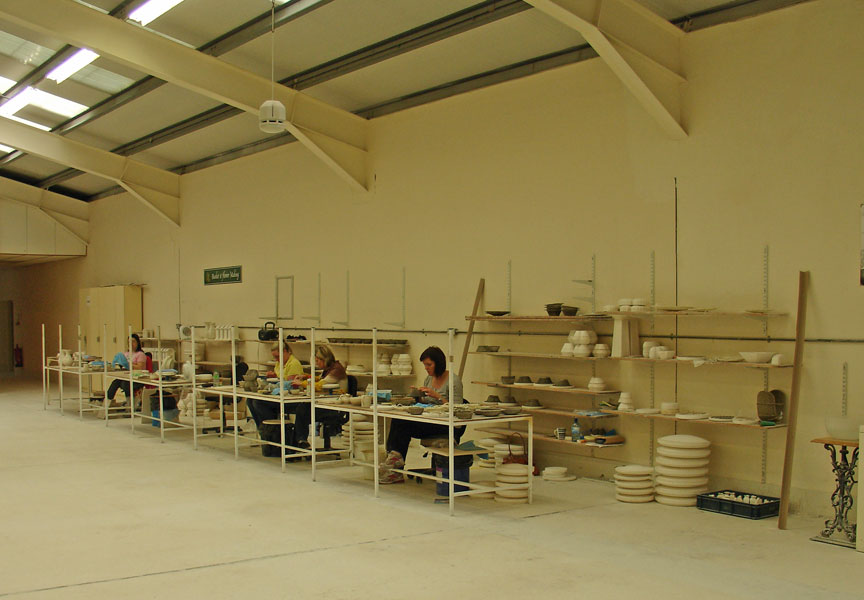
all hand work

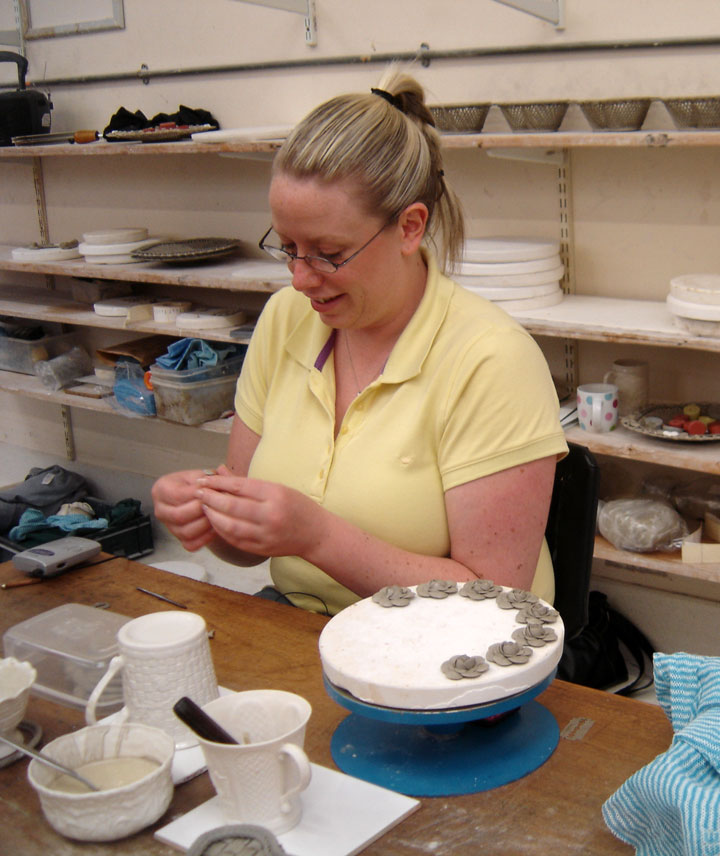
making flowers
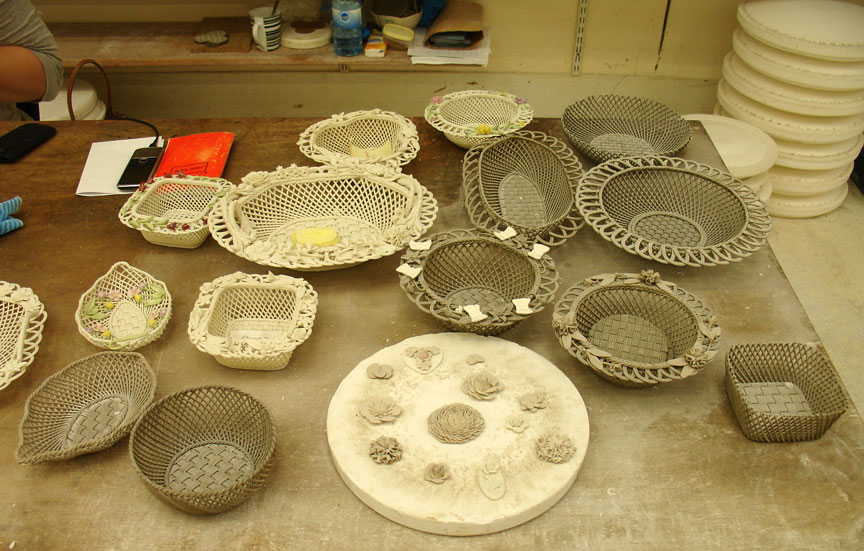
what they prepare for firing
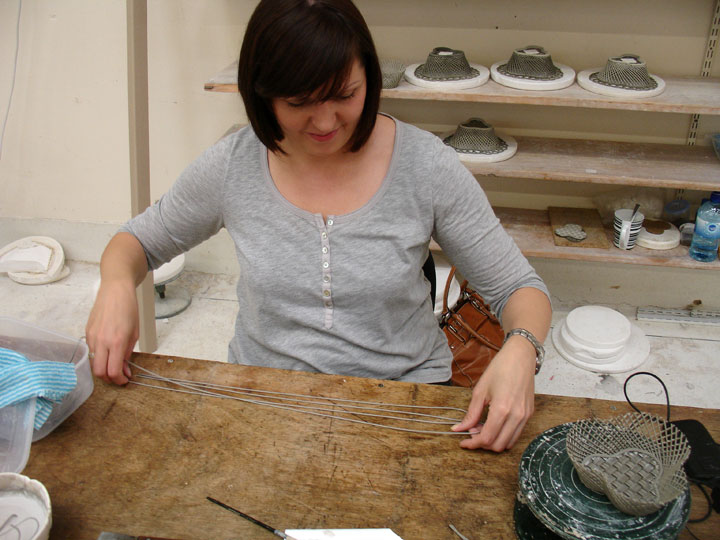
rope for baskets
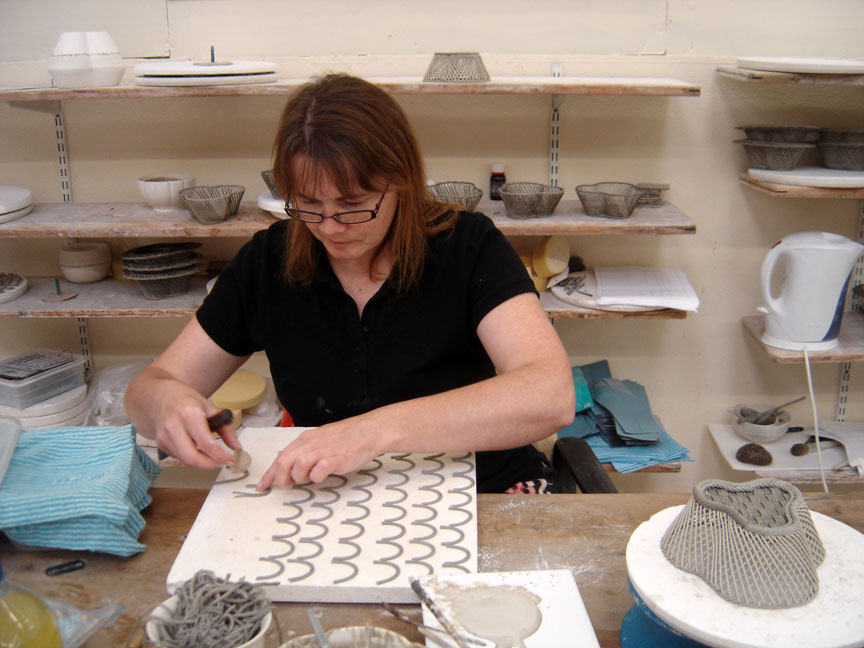


basket making
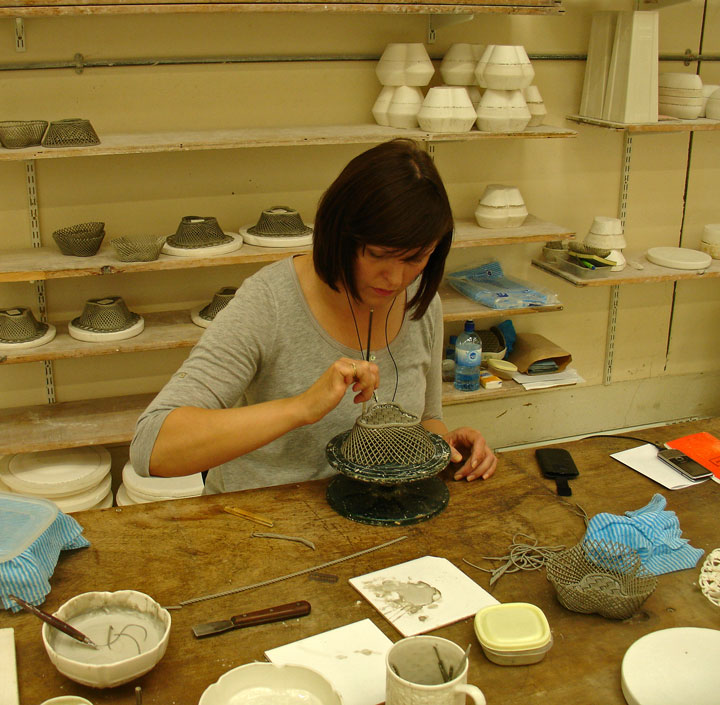
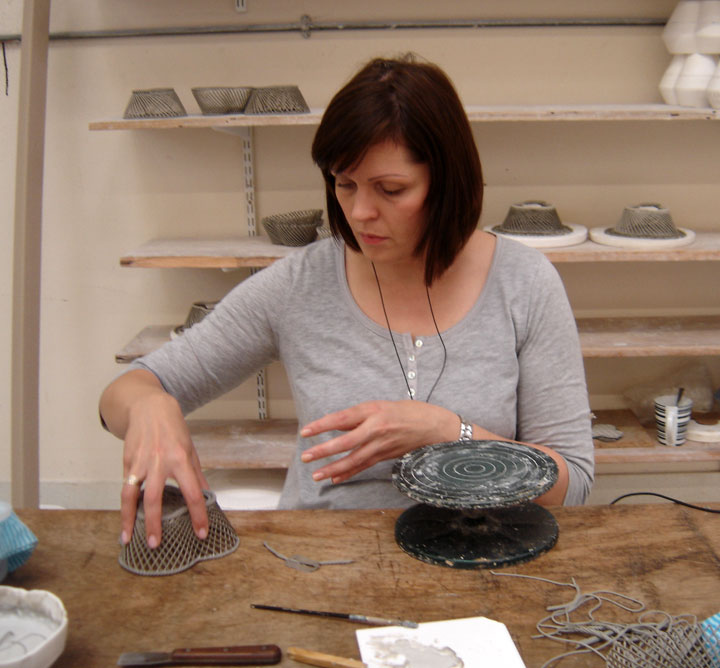
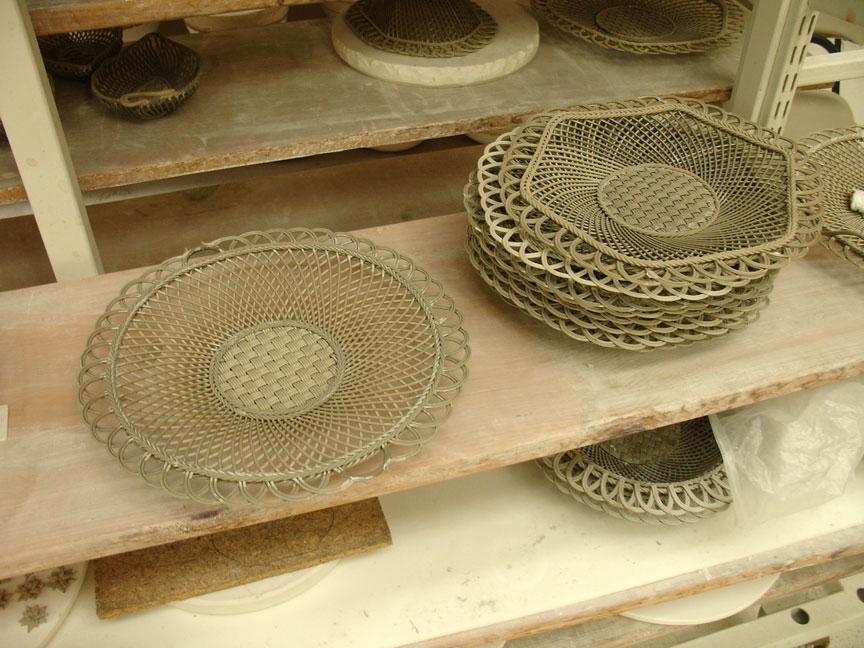


former marks
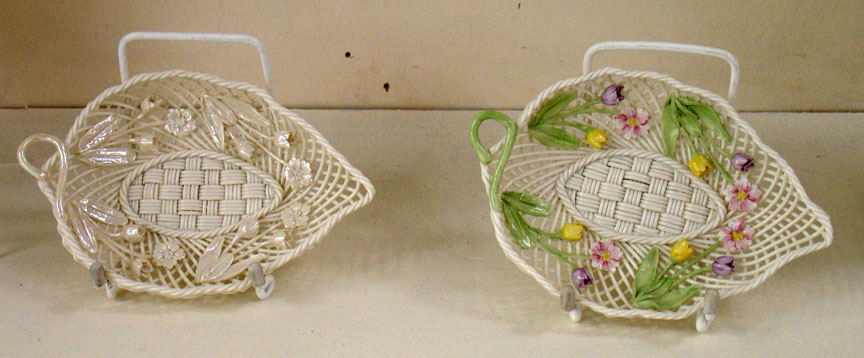
adding color

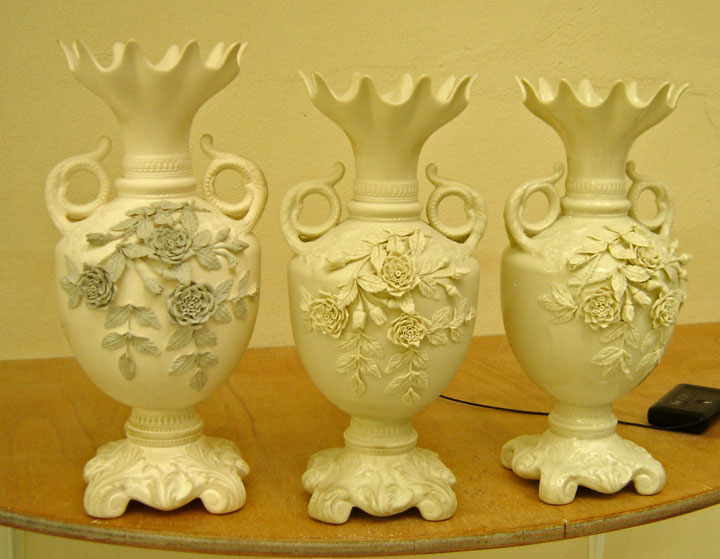

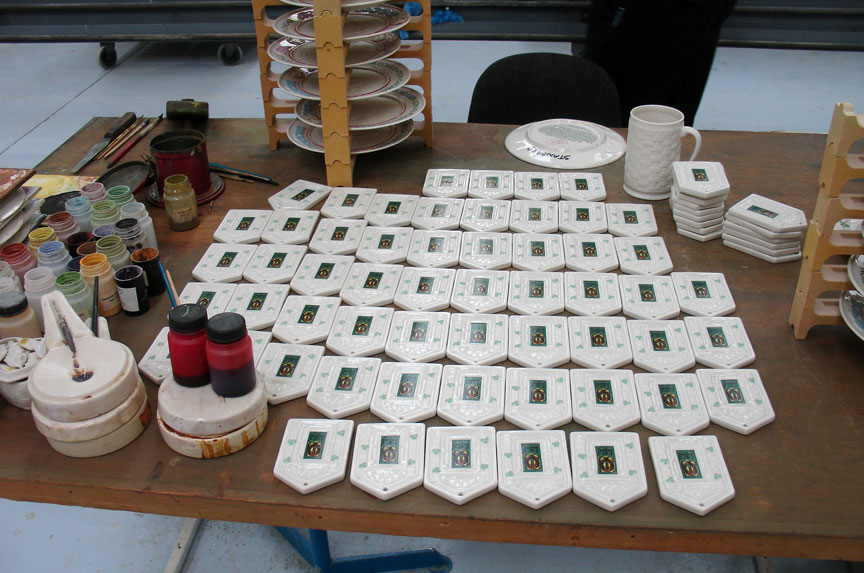
making Christmas ornaments
which the average tourist can afford